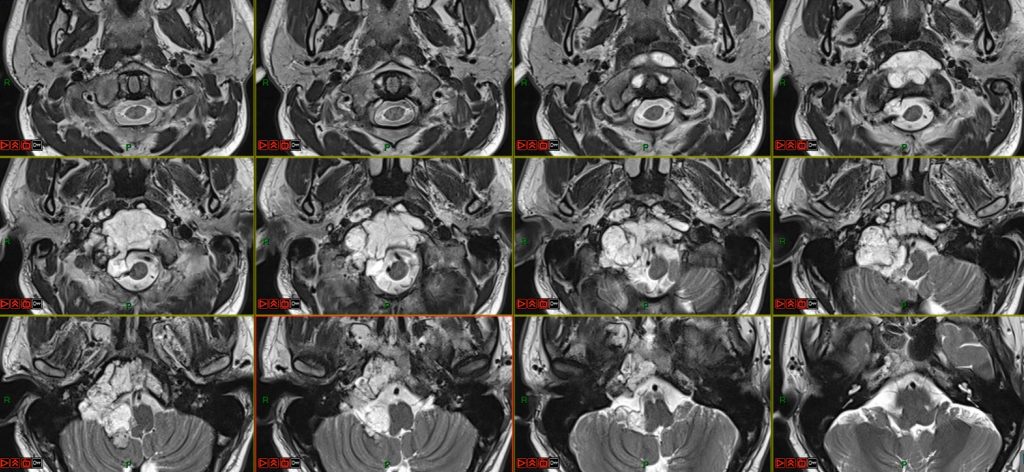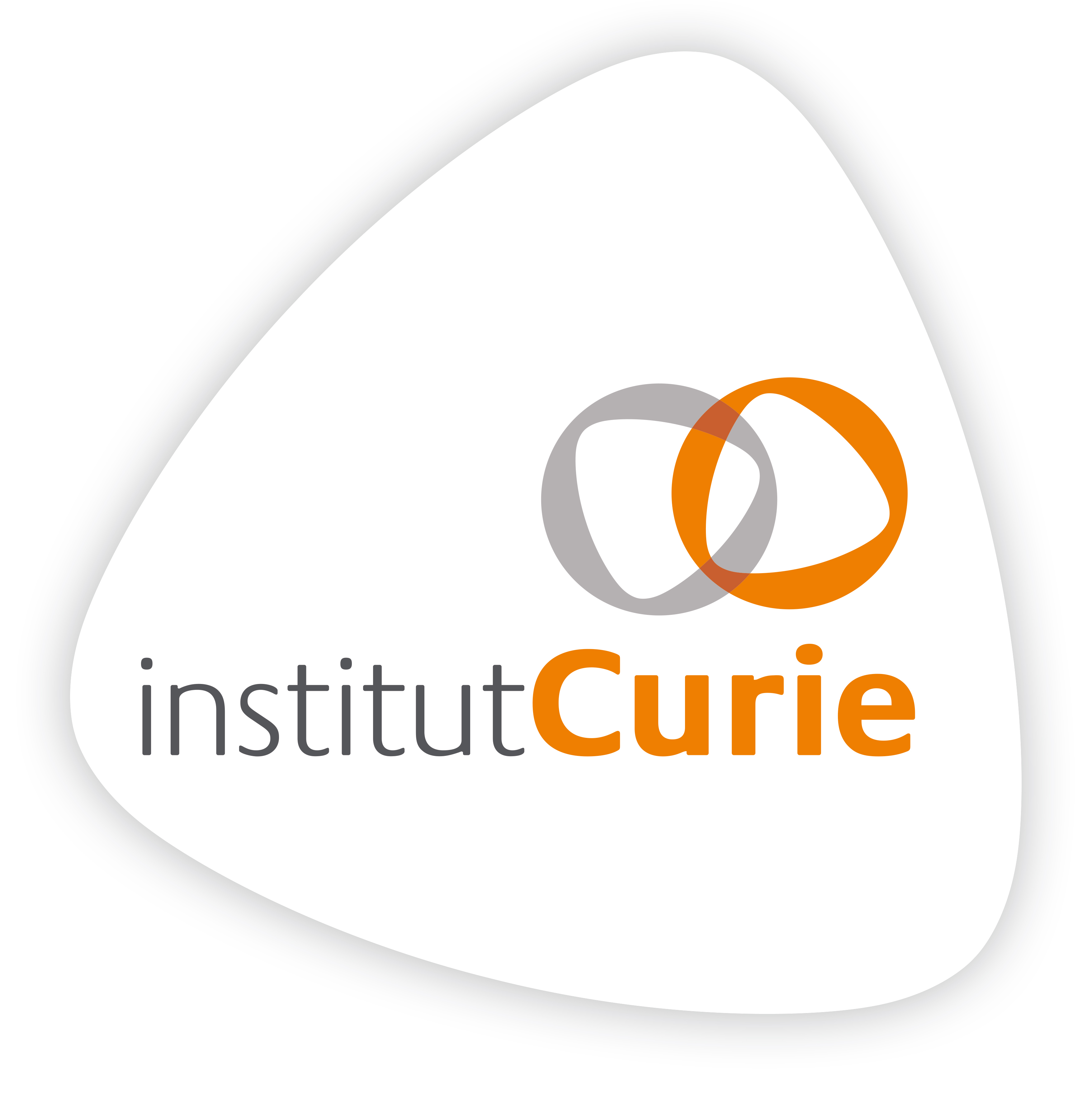Our department is a reference center for the treatment of chordomas, and has one of the world’s most extensive track records, with over 350 patients treated since 1996.

Craniocervical hinge chordoma
The department also participates in a number of research protocols and collaborates with several teams specializing in chordoma research.
Participation in the development of recommendations with the Chordomas Consensus Group
- Best practices for the management of local-regional recurrent chordoma: a position paper by the Chordoma Global Consensus Group. Ann Oncol. 2017 Jun 1;28(6):1230-1242.
Link: https: //www.ncbi.nlm.nih.gov/pubmed/28184416
- Building a global consensus approach to chordoma: a position paper from the medical and patient community. Lancet Oncol. 2015 Feb;16(2):e71-83. doi: 10.1016/S1470-2045(14)71190-8.
Link: https: //www.ncbi.nlm.nih.gov/pubmed/25638683
- Anocef, Référentiels Chordomes, January 2018
Link: https: //www.anocef.org/download.php?modele=anocef_referentiel_chordome2018
Collaborations
- Prognostic markers for chordomas: Pr Homa Adle Biassette, Department of Pathological Anatomy, Hôpital Lariboisière
- Xenograft model: UMR 965, Pr Marc Pocard
- Exome and RNAseq sequencing of chordomas, U830, Institut Curie, Pr Olivier Delattre
- Nanoparticle proton therapy of chordomas, ISNO, Institut des sciences Moleculaires d’ORSAY, Pr Sandrine Lacombe
- Texture studies, UMR 1023 Inserm-CEA, Dr Irène Buvat
- Xenograft, LIP Institut Curie, Dr Didier Decaudin
- Metabolomics of chordomas, Pr Izzie Namer, CHU de Starsbourg
Research protocols in collaboration with the Institut Curie
- Co-investigator of the ExoChord study: “Exome and RNAseq sequencing of chordomas”, U830, Institut Curie, Pr Olivier Delattre
- Co-investigator of the Nano-Chord study, “Potentialisation de la protonthérapie par des nanoparticules dans les chordomes”, ISNO, Institut des sciences Moléculaires d’ORSAY, Pr Sandrine Lacombe
- Co-investigator of the TexChord study: Study of texture using PET/CT images, UMR 1023 Inserm-CEA, Dr Irène Buvat
- Co-investigator of the XenoChord study, “Development of an animal model”, LIP Institut Curie, Dr Didier Decaudin
- Co-investigator of the ProtonChord study, PHRC: “ProtonChorde01” Improvement of local control in chordomas of the skull base, mobile spine and sacrum treated by surgery and complement proton therapy targeting hypoxic cells highlighted by PET/CT with [18-FLUOR] Fluoroazomycin-Arabinoside ([18F]FAZA)

